 |
 |
 |
| |
Comorbidities in women living with HIV: a systematic review
- higher rates for kidney, bone, heart, neurocognitive diseases
|
| |
| |
EACS 2021 Oct 27-30
S. Raffe1, C. Sabin2, Y. Gilleece1
1University Hospitals Sussex NHS Foundation Trust, Lawson Unit, Brighton, United Kingdom, 2University College London, Institute for Global Health, London, United Kingdom
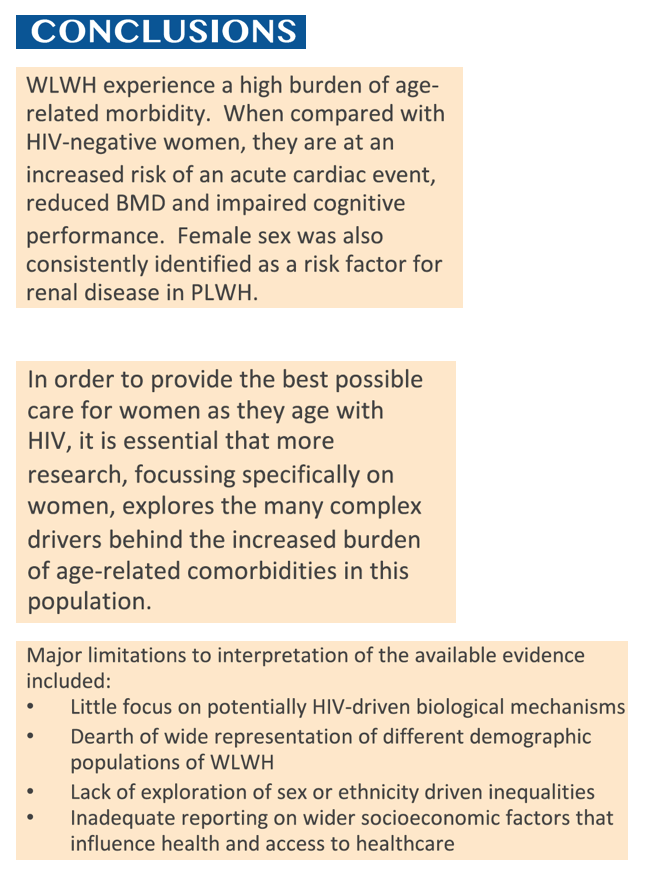
abstract
Purpose or Objective
Effective antiretroviral therapy (ART) has improved the life expectancy of women living with HIV (WLWH). This population is now experiencing more age-related comorbid disease. This systematic review presents a summary of our current understanding of the prevalence and impact of comorbidities in WLWH in the modern ART era.
Results
MEDLINE and Embase were searched for cohort studies (January 1st 2010 to September 1st 2020) that reported the prevalence of cardiovascular, bone, renal and neurocognitive disease in WLWH >18 years. Cohorts were included if at least 100 (or >50%) participants were female and data-analysis included prevalence by sex.
Materials and Methods
3050 articles were identified and screened. 153 full-text articles were assessed for eligibility and 43 included in the final review. Article exclusion was predominately due to lack of analysis based on sex. Significant gaps in the literature were identified, notably a lack of data on WLWH > 50 years old. The data suggests a high burden of cardiovascular, bone, renal and neurocognitive disease in WLWH compared to HIV negative women. Traditional risk factors, such as hypertension, diabetes and dyslipidaemia were common and often poorly managed. Generalisability of the results was limited as many studies were conducted in the USA. Comparisons between WLWH and MLWH were difficult due to marked differences in demographics, particularly socioeconomic factors, between both groups.
Conclusion
WLWH experience a high burden of comorbid disease. Traditional risk factors are common and often poorly managed. This review also highlights the magnitude of differences between women and men living with HIV beyond the pathophysiological, particularly socioeconomic factors such as educational attainment, household income and access to healthcare. It is essential that future research helps to unpick the complex drivers of morbidity in WLWH, to improve the holistic management of this population.
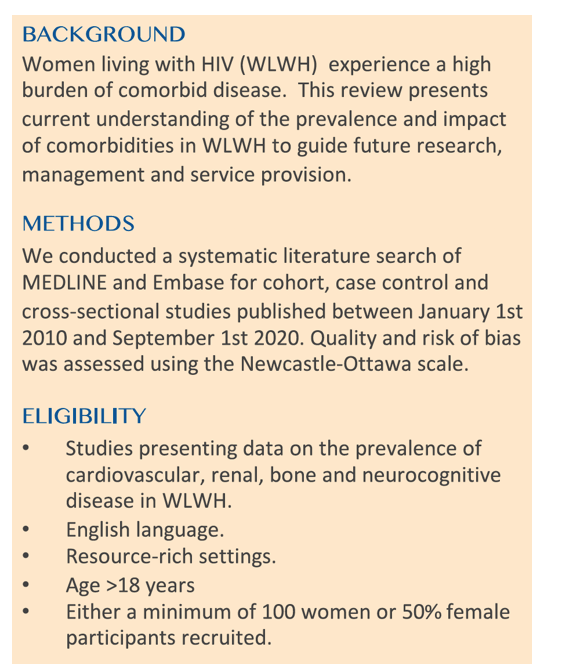
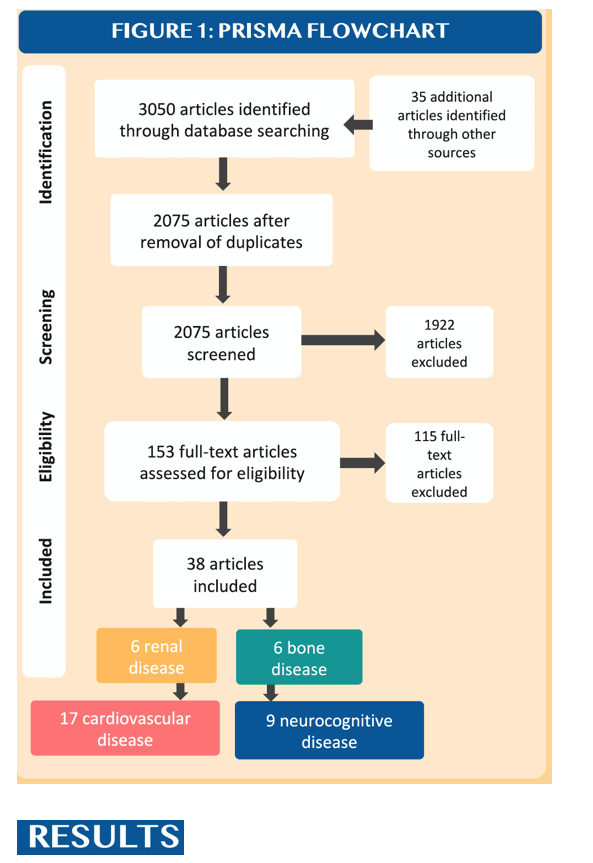
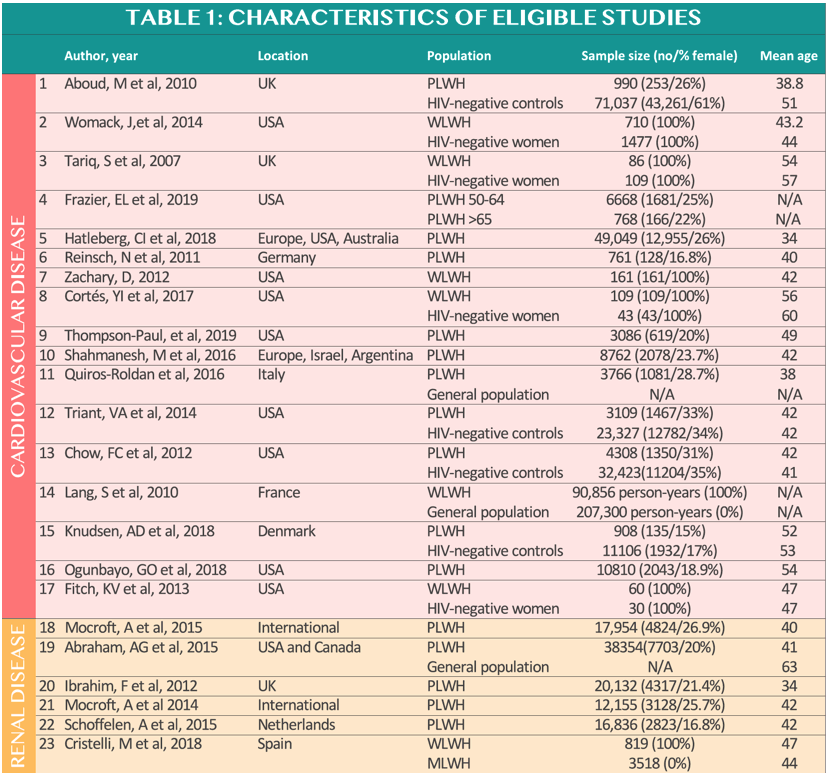
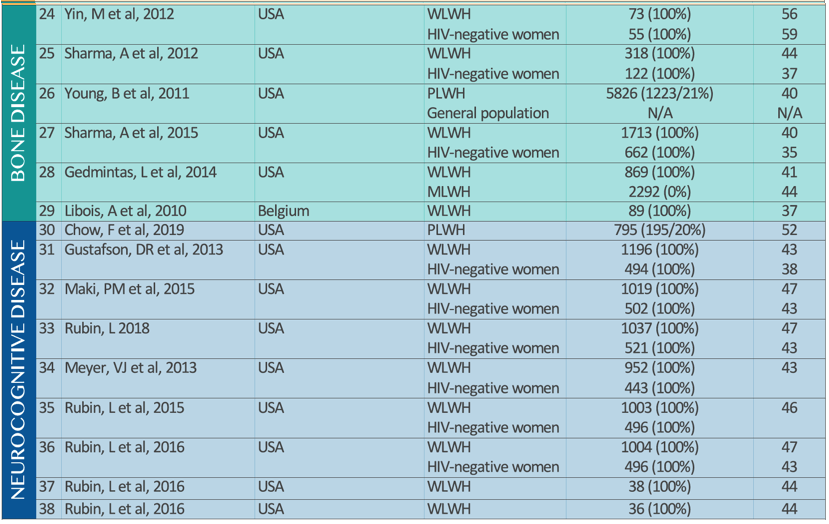
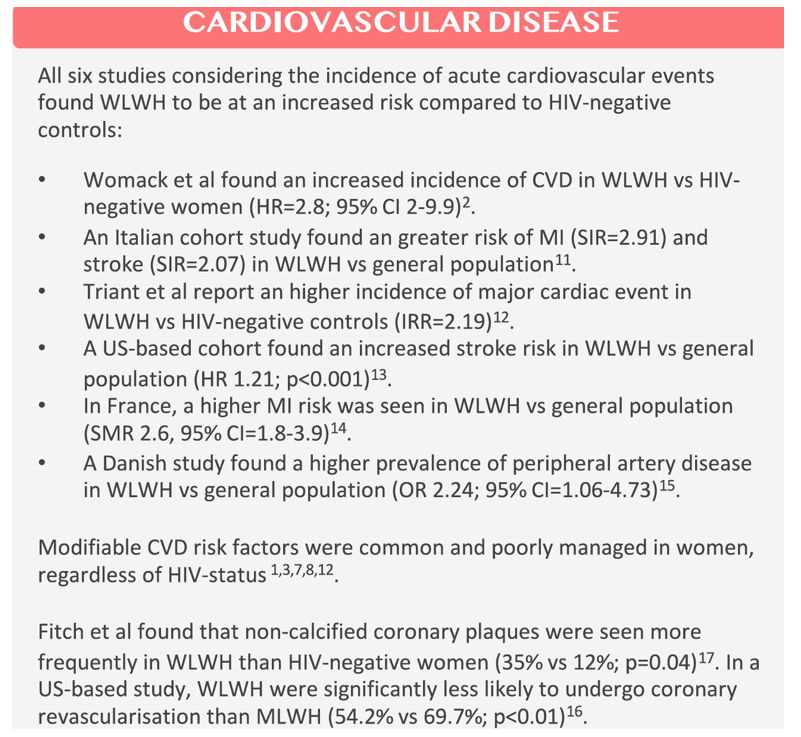
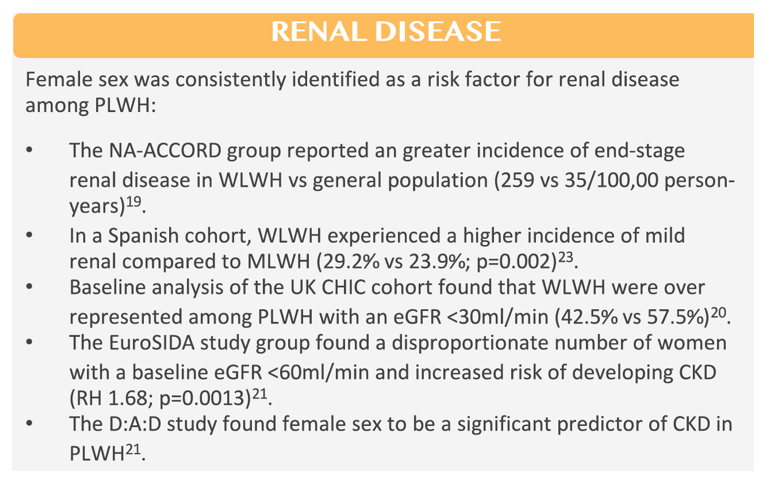
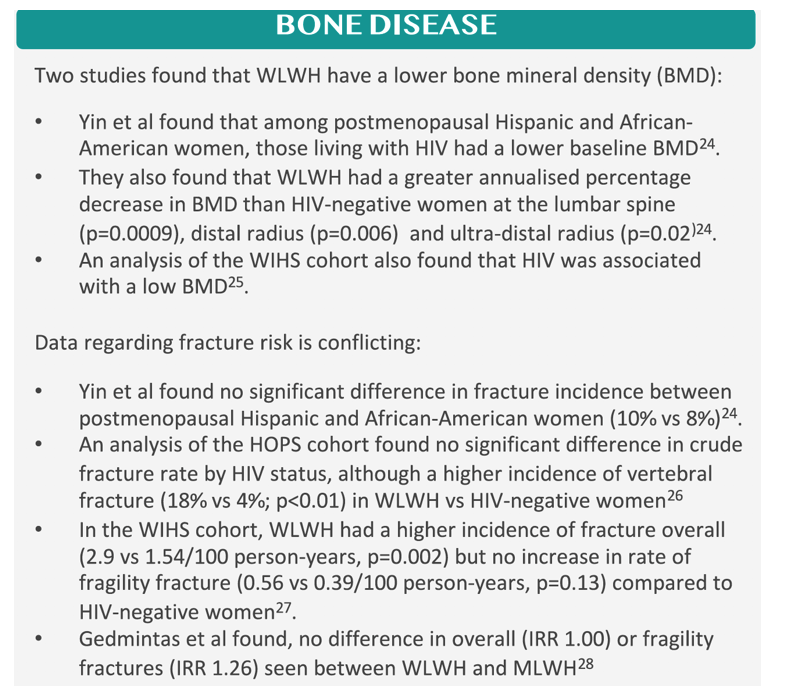
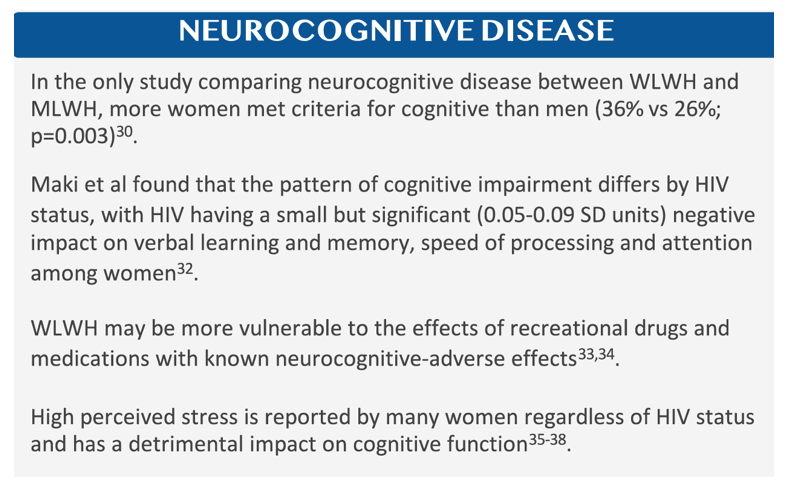
|
| |
|
 |
 |
|
|